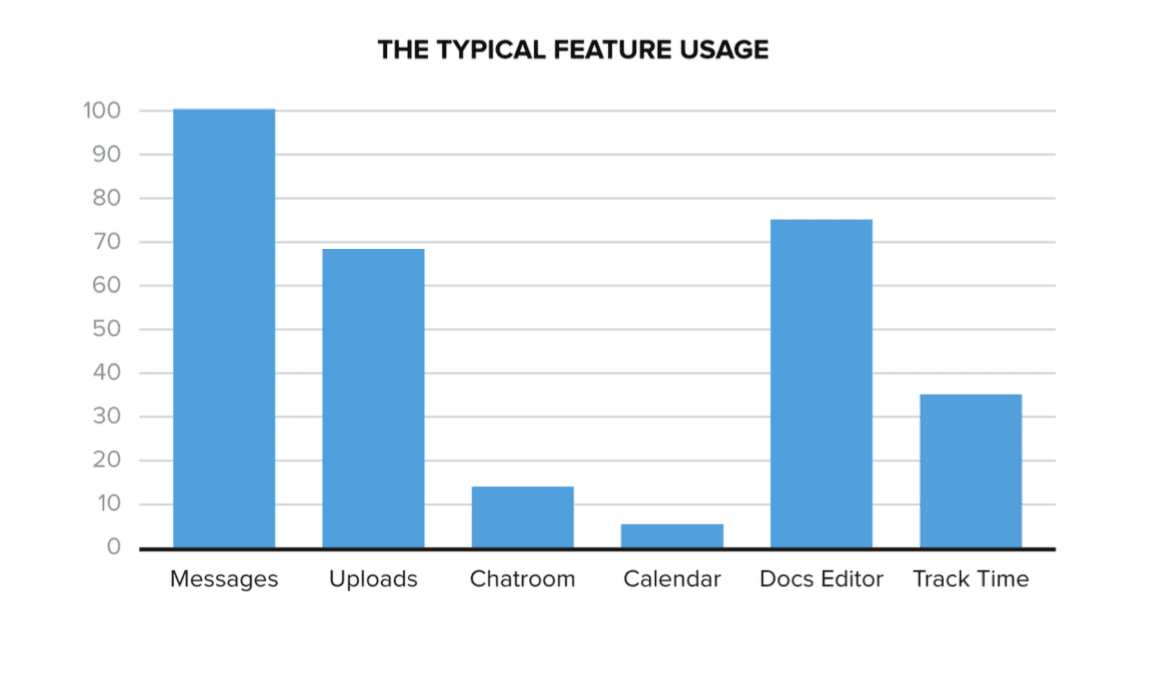One Metric Is All Your Product Team Needs
The best way to give your product team a clear direction and purpose is to boil down your efforts into one metric.
This article comes excerpted from Hiten Shah’s eBook 5 Habits to Building Better Products Faster.
Over the past 10 years, Hiten has built and grown 8 different web-products, including Crazy Egg, KISSmetrics, and now Quick Sprout. Each of these companies used content marketing to drive the lion’s share of growth.
Sign up for Hiten’s SaaS Weekly newsletter to get a free copy of the book delivered straight to your inbox, along with fresh business insights every Monday morning.
“Being data-informed means that you acknowledge the fact that you only have a small subset of the information that you need to build a successful product,” Andrew Chen says. Nothing could be more pertinent for early product teams than that lesson. Despite the amount of data you’re collecting, you don’t know it all—you need to test, test, and test some more.
As a team, your success is rooted in that experimentation. You need to move fast, come up with hypotheses, and validate them. To do this effectively, everyone on your team has to know why they’re working on what they’re working on and what they’re trying to accomplish. The best way to give your product team a clear direction and purpose is to boil down your efforts into one metric.
Read our North Star Playbook to discover your product’s North Star
How To Find Your One Metric
One of the best ways to use data to find your North Star metric is to look at the usage data you already have on hand. When you’ve already got usage, analyze it.
(Source: Intercom on Product Management)

Map out product usage by feature to see what levers you can find to improve. Your core metric will be different depending on where you are in the product lifecycle:
- Beginner: In the early stages of your product, focusing on upping your total active user base is perfectly acceptable.
- Intermediate: As you hone your approach to data, look for more specific levers of growth. For an analytics product, this would be something like getting users to create 3 reports.
- Advanced: When you get more at home with your analytics data, you can start using a secondary metric to supplement your core metric. As you have multiple product teams, you can have each of them devoted to upping other specific core metrics.
Here are some examples of single metrics with target goals:
- Twitter: Twitter very early on knew that its ability to generate revenue was tied to the amount of views that Twitter feeds received. They used number of feed views to help predict potential revenue.
- Remind: Remind, a communication tool for teachers, focused on getting new users to refer other teachers to their product at the optimal moment. Internal data showed that momentum in growth was tied to when the first teacher at a school used Remind, so the product team focused its efforts on getting these users to refer.
- Zynga: Zynga, an online game platform, looked specifically at Day 1 retention. If a user came back the day after they had downloaded a game, they were more likely to stick around longer. They were also more likely to spend money in the game.
- **Dropbox: **For Dropbox, the key action for engagement was getting users to place at least one file in a Dropbox folder.
- Slack: Slack focused on getting companies to hit a milestone of 2,000 messages sent, which corresponded to a 93% retention rate. Their reasoning was simply that that’s how long it takes for an organization to really use the product and realize its value.
As Slack CEO Stewart Butterfield says, for each metric used to build product “you have to figure out what conversion means in your case. What does retention mean? What does activation mean? For every business, it’s going to be slightly different because of the nature of the product and the kinds of people who use it.”
Different products will have different core metrics. Data only becomes useful for product development when you can figure out how it fits into the bigger picture.
How To Turn Your One Metric Into A Habit
In order to build your one metric into a habit that your team can iterate on day-by-day, you have to make sure everyone is on the same page.
- Set an expiration date. At Y Combinator, startups are expected to hit 8% growth a week on their core metric. Creating a timeline for product metrics is the only way you can build up an organizational rhythm that uses data to get results.
- Tape your core metric to the heads of your entire team. As Aditya Vempaty of analytics platform Amplitude says, “It’s impossible to come up with individual tactical goals that contribute to the overarching core metric if data is siloed and available only to the growth team or the data scientists.” Your overarching core metric should be in a dashboard where everyone, from Product to Sales, can see it.
- Drown out the noise. Looking at Facebook’s metrics and how it hit viral growth 10 years ago is fine, but that doesn’t relate 1:1 to what you’re building today. In order to actually build a product people care about, you need to collect your own data within the context of your product.
Ultimately, uniting your team around a single metric creates purpose and enforces discipline for every feature you build, no matter how small.
Moving Beyond Blind Data
In product development, data is often used as a crutch. When you want to justify the decisions you’ve made on your product, paying lip-service to data can provide you with easy answers.
Good product managers do the exact opposite. They use data to constantly challenge their assumptions, to validate hypotheses, and to solve urgent problems. At the end of the day, using data to build products is an incredibly simple process. It shows you how well you’re doing—and where you have an opportunity to do even better.

Hiten Shah
Co-founder of Crazy Egg
Hiten Shah is co-founder of several SaaS businesses including, Quick Sprout, Crazy Egg & Draftsend.
More from Hiten




